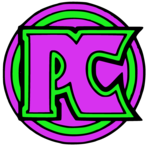The Complete Pacific Comics Re-Reading Blog Series presents:
Twisted Tales
edited by Bruce Jones and April Campbell
Twisted Tales (1982) #1-8
I wrote about Twisted Tales last year on the Eclipse blog, so I’m not going to repeat myself here. Perhaps I can just drop an iframe in here?
Did that work? But I’ll just add this little titbit from William Schanes’ Facebook:
As Alien Worlds and Twisted Tales started to be published, we had received a very strongly worded letter from Geppi’s Comic World (which was Steve Geppi’s chain of comic book specialty retail stores on the east coast). The letter went to great length as to how offended they were by the editorial direction some of our titles were heading in, and they wanted to let us know under no circumstances would any of the 6 stores support those controversial titles, and would also limit how deep the store chain would continue to support the more traditional titles. They also referenced potential concerns with some of their leases, as they didn’t want the property management company who held the lease to say Geppi’s Comic World was in violation due to unacceptable editorial mater. This letter was signed by each of the store managers, their general manager Bob Cook, and Steve Geppi. This hit us hard, and we were very worried other major distributors would follow suit. The other distributors didn’t object, or we would have been in real trouble.
And I found a review of Twisted Tales #1 in Amazing Heroes 22 by Kevin McConnell:
The stories themselves are
preceded by a long-winded text
piece in which Jones waxes
eloquent about the importance
of “intelligent horror fiction.” I
couldn’t agree more with Bruce’s
point of view, yet I find it con-
founding that two out of his four
stories are blatant pornography
(see: “Infected” and “Out of His
Depth’?).Not only does the inclusion of
such unwarranted subject mat-
ter run counter to everything
that Jones claims to appreciate
about the genre, but it neutral-
izes any terror or melodrama by
downgrading the work to the
realm of smut. Don’t get me
wrong: T&A have their place,
but the sexual gross-out is a
cheap substitute for true spine-
tingling horror.It seems to me that “intelligent
horror fiction” should: a.) scare
the shit out of the reader (not
insult or disgust him); and b.) be
panying these two pieces. To
be blunt, Corben’s visual
endeavors are execrable. The
contents of his haphazard panel
compositions are without form
or coherence; the colors are
harsh and expressionless; and
it’s all topped off by one of his
ubiquitous tit queens. As for
Alcala’s visuals: regardless of
whether it’s horror of super-
heroics, Alcala depicts alls sub-
jects with such machinelike
indifference almost
smell the oil and hear the grind-
ing of gears.
Well, that’s er a point of view I guess?
Jones reflects, “It was very rewarding creatively…we were breaking new ground at every turn back then with technical things — the coloring, the glossy stock, the painted covers, the whole darker, adult feel. It was a very kinetic, very experimental, and fun time. And scary. We had no idea how this stuff was going to finally look or how it might be received. But it was exhilarating. I had total autonomy on my books. I was the packager, PC was the publisher, and Steve and Bill Schanes just left me alone to run things my way. I doubt I’ll ever see that kind of unbridled freedom again. I’m not sure anybody should have that much carte blanche; it’s too easy to abuse it.”

